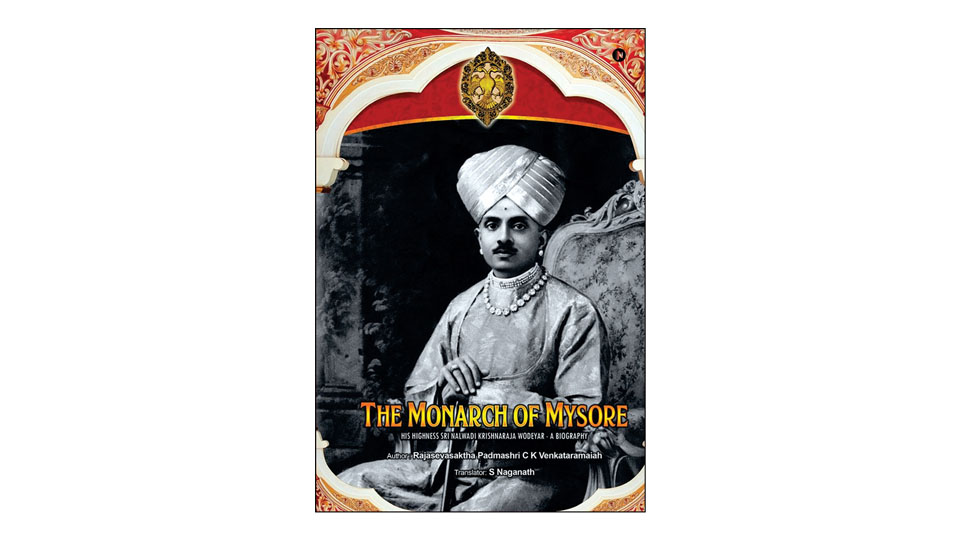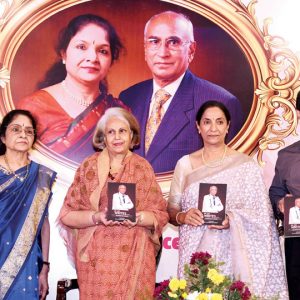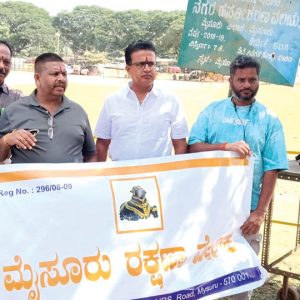An exhaustive source of information related to Nalwadi
By Gouri Satya, Sr. Journalist
Title: The Monarch of Mysore
Author: C.K. Venkataramaiah
Translator: S. Naganath
Year: 2024
Pages: 580
Price: Rs. 1,000
Publisher: Notion Press, Chennai
The Monarch of Mysore’ is a biography of Maharaja Krishnaraja Wadiyar IV, who lives in the memory of all Mysureans for his contribution towards the development of the State during his nearly four decades of reign from 1902 till his death in 1940.
The biography is an English version of the popular Kannada book, ‘Aalida Mahaswamiyavaru’ by C. K. Venkataramaiah, a scholar in Kannada and Sanskrit and Chief Translator of the Mysore Government, who was honoured with the title ‘Rajasevasakta’ by Maharaja Jayachamaraja Wadiyar.
The translator is Prof. S. Naganath, former Professor of English at National College, Bangalore and son of renowned scholar and historian Dr. S. Srikanta Sastri, former Professor and Head, Department of History, University of Mysore.
C.K. Venkataramaiah published his work in 1941 soon after the death of the Maharaja on August 3, 1940, and when the last Maharaja Jayachamaraja Wadiyar had succeeded to the throne. The author has dedicated his work to him. Venkataramaiah regrets he could not present the biographical work to the Maharaja or the Yuvaraja who had pre-deceased Nalwadi on March 11, 1940. The Kannada work is hailed as an authentic official biography as he wrote it after having obtained permission from Nalwadi. What makes it more interesting is the numerous authentic anecdotes related to the Maharaja.
Venkataramaiah sees his hero with great admiration throughout his narrative. He praises him all through as a pious and saintly king and as Prof. Naganath says, “Venkataramaiah does not find any flaws or shortcomings in his hero.” Here, the Professor reminds us of the words of 19th-century British historian and philosopher Thomas Carlyle that “Great men should rule and others should serve them.” His words sum up Venkataramaiah’s approach to his hero, who is hailed as Raja Rishi.
Venkataramaiah also does not provide us with any information about the private life of Nalwadi or the Yuvaraja. “There is no information on the relationship between the Maharaja and Maharani Pratap Kumari Devi, who were married for forty years.” This is what a reader misses in this biographical book.
In his Foreword, Sir Mirza Ismail, Dewan of Mysore, describes Venkataramaiah’s book as “a very worthy biography of our noble ruler.” His book, he says, “is also of special value as affording an intimate glimpse into the life of a great man and his real personality.” This applies to the translated work of Prof. Naganath.
After Sir Mirza’s Ismail’s foreword, there is a prologue written by Venkataramaiah and 14 chapters into which the life and administration of Nalwadi are divided. He concludes his work after referring to Maharaja Jayachamaraja Wadiyar in the last and 15th chapter. These chapters spread over about 610 pages. About 84 rare black-and-white photos related to Nalwadi have enhanced the value of the book, ‘Aalida Mahaswamiyavaru.’ The book has seen many reprints. However, my effort to obtain a copy of it has not been successful so far.
Similar to C.K. Venkataramaiah’s work, Prof. Naganath’s translated work covers 587 pages with the same pictures of Nalwadi reproduced in the original form. Besides the English version of the 15 original chapters, Prof. Naganath’s book covers the biography of the original author (‘The Biographer’s biography’) with his picture, and also those of Maharaja Nalwadi Krishnaraja Wadiyar, his brother Yuvaraja Kanteerava Narasimharaja Wadiyar, nephew Maharaja Jayachamaraja Wadiyar, and Dewan Mirza Ismail.
The book also includes a ‘Navaratnamala’ in Sanskrit by Vidwan Motaganahalli Mahadeva Sastry, a renowned scholar of the period of Maharaja Krishnaraja Wadiyar and the great-grandfather of the translator. The Navaratnamala was read before the Maharaja during the silver jubilee function in Bangalore in September 1927 and its summary in English is also provided.
In addition to these, Prof. Naganath writes about what prompted him to translate Venkataramaiah’s book into English. He says, “When I first read Aalida Mahaswamiyavaru what struck me was that the modern day left historians had completely ignored the contributions of the rulers of the Wadiyars’ dynasty in the making of modern Mysore.” The rulers he refers to are Maharaja Chamarajendra Wadiyar, Maharaja Krishnaraja Wadiyar, and Maharaja Jayachamaraja Wadiyar, and also Regent Vanivilasa Sannidhana (Regin: 1895-1902), a total period of 82 years.
Many of these historians give credit to the Dewans for the modernisation of Mysore State, he regrets and adds, “Let us not forget that the rulers’ vision, dreams, and the will to implement big projects for the benefit of the common man alone were responsible for the far-reaching changes that miraculously took place in Mysore State.”
Translation of a work from one language to the other is always a difficult job. It is not easy to find appropriate words and hence falls short of the original work. The translated work misses the grip and flavour of the original. This is true in this case also. The translator admits this fact when he says that he has endeavoured to remain faithful to the original Kannada version of the biography. But that does not mean ‘The Monarch of Mysore’ is in any way inferior to C. K. Venkataramaiah’s ‘Aalida Mahaswamiyaru.’ It is indeed an exhaustive source of information related to the renowned ruler of Mysore, Nalwadi Krishnaraja Wadiyar. For one who does not find a copy of ‘Aalida Mahaswamiyavaru’ or does not know Kannada and still wants to know about the King of Mysuru, his personality, his grace and kindness, this is the work for all of them.








Recent Comments